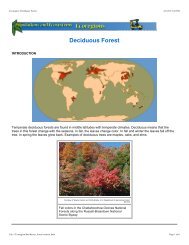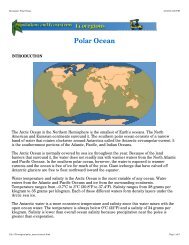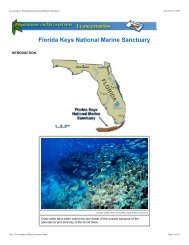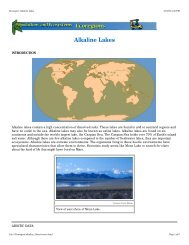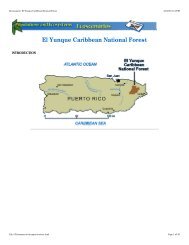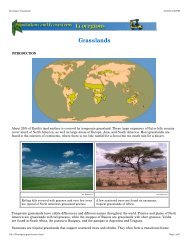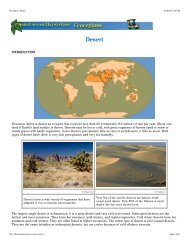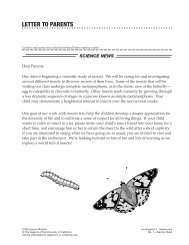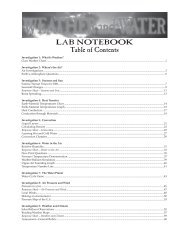Ecoscenarios Combined - FOSSweb
Ecoscenarios Combined - FOSSweb
Ecoscenarios Combined - FOSSweb
Create successful ePaper yourself
Turn your PDF publications into a flip-book with our unique Google optimized e-Paper software.
Ecoscenario: Saguaro National Park<br />
4/16/03 3:23 PM<br />
Saguaro National Park is in southern Arizona, near Tucson. It is part of the Sonoran Desert of southern California,<br />
Arizona, and northwestern Mexico. This is one of the most diverse and, by desert standards, the lushest of North<br />
American deserts. The desert is named for the huge saguaro (suh•WHAH•roh) cactus that dominates the<br />
landscape.<br />
The Sonoran Desert was first inhabited by the Tohono O'Odham Indians. They were drawn to the area by the sweet<br />
fruit of the saguaro cactus. In 1933 the extensive forest of saguaros east of Tucson was made a national monument<br />
by President Herbert Hoover, to preserve the desert icon. The winter of 1937 was very cold, and some of the<br />
saguaros were damaged by frost. The skin of the cacti blistered, and some died. People thought that the freeze<br />
damage was a disease, and they worried that all saguaros were at risk. This led to the preservation of the saguaro<br />
forest to the west of Tucson. Most of the saguaros in the western section of Saguaro National Monument were<br />
younger than those in the eastern section.<br />
Cattle grazing was still allowed in the area, and the cattle trampled young saguaros. In the late 1950s all cattle<br />
were removed, and the saguaros were allowed to regrow. Because of their slow growth rate, they are still recovering.<br />
Today the saguaros are either very young or very old, with few middle-age cacti.<br />
In November 1961, President Kennedy signed a bill and expanded the monument to include Tucson Mountain Park.<br />
In 1975, 28,900 hectares (71,400 acres) of the Saguaro Wilderness Area was added. On October 14, 1994,<br />
Saguaro National Park was established from the Saguaro National Monument and Saguaro Wilderness Area for a<br />
total of 37,000 hectares (91,400 acres).<br />
In addition to the saguaro desert flora and fauna, the park includes ancient Tohono O'Odham campsites and<br />
petroglyphs and remnants of ranching, mining, and homesteading.<br />
Art Explosion<br />
A dramatic sunset silhouettes saguaro cacti.<br />
Tucson, Arizona, is surrounded by Saguaro National Park. Many people say that the desert is especially beautiful<br />
after it rains. After a storm, you can smell the creosote bushes, which some people say "smell like the desert."<br />
Saguaro National Park had 3.4 million visitors in 1999. Because of its proximity to Tucson, some of the roads in the<br />
park are used as shortcuts by commuters traveling to homes on the borders of the park.<br />
file:///Ecoscenario/saguaro/content.html<br />
Page 2 of 12



